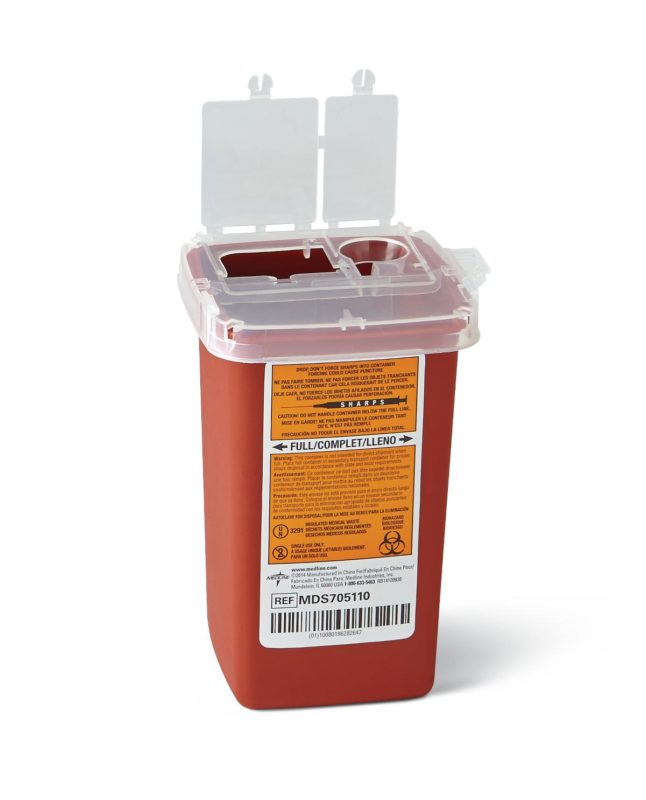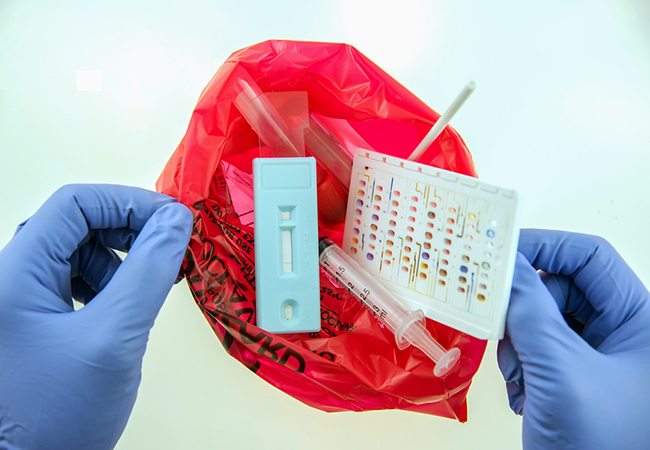Guardians of Tidiness: Resident Medical Waste Removal Service for Your Comfort
Guardians of Tidiness: Resident Medical Waste Removal Service for Your Comfort
Blog Article
Minimize Costs and Take Full Advantage Of Safety And Security: Effective Medical Garbage Disposal Methods
Efficient medical waste disposal methods are critical for medical care centers to take full advantage of and lessen expenses security. With the growing worry for environmental sustainability and the increasing variety of laws surrounding waste management, it is crucial for medical care companies to embrace compliant and efficient techniques. By executing proper segregation and classification, efficient product packaging and labeling, risk-free transportation and handling, efficient treatment and disposal approaches, and compliance with regulatory standards, healthcare centers can ensure the secure and accountable management of clinical waste. In this discussion, we will explore each of these techniques thoroughly, supplying insights and useful tips for medical care professionals to enhance their waste disposal processes.

Appropriate Segregation and Classification
Correct partition and classification are important elements of reliable clinical garbage disposal strategies, guaranteeing the security of health care workers, the public, and the atmosphere - medical waste removal near me. medical waste disposal services with WasteX. By separating different sorts of medical waste at the factor of generation, healthcare facilities can minimize the risk of cross-contamination and potential damage to individuals and environments
Among the crucial consider proper partition is the identification and category of medical waste. This entails categorizing waste right into various teams, such as infectious, unsafe, radioactive, or pharmaceutical waste. Each group requires details handling, storage, and disposal approaches to stop any negative effects on human health and wellness and the environment.
Moreover, correct segregation additionally includes the usage of color-coded containers and labels to clearly determine and set apart the various kinds of clinical waste. This helps medical care workers and waste monitoring personnel to quickly identify and handle the waste properly. Red containers may be made use of for transmittable waste, while yellow containers may be designated for harmful waste.
Along with segregation, proper categorization likewise entails the correct packaging and containment of medical waste. This guarantees that waste is safely saved and transferred without presenting any kind of threats to people or the environment. Using puncture-resistant and watertight containers, along with properly sealing and labeling them, helps to stop any type of unexpected direct exposure or launch of hazardous substances.
Efficient Packaging and Classifying
Reliable product packaging and labeling play a crucial role in guaranteeing the efficient and risk-free disposal of medical waste. Proper product packaging is vital to prevent leakage, breakage, or splilling throughout transportation and handling. It assists to decrease the risk of contamination and secures health care employees, waste monitoring employees, and the setting from potential threats.
Clinical waste must be packaged in watertight and strong containers that are resistant to puncture and breakage. These containers ought to be correctly secured to protect against any type of leakage. In addition, the product packaging ought to be able to endure the problems of transport, including temperature level variations and misuse.
Identifying is equally vital as it gives critical info about the materials of the waste and any type of possible dangers related to it. The tags should consist of the name of the health care center, the sort of waste, and any kind of special delivery guidelines. Clear and standard labeling makes sure that waste management personnel can conveniently identify and manage the waste appropriately.
Effective product packaging and labeling likewise help in the proper partition and categorization of clinical waste. Clear labeling allows for simple recognition of different waste streams, such as contagious waste, sharps, or pharmaceutical waste. This aids in improving the disposal procedure and ensuring that the waste is treated or dealt with in conformity with regulatory guidelines.
Safe Transport and Handling
Making certain the safe transportation and handling of clinical waste is of utmost importance in order to protect against any prospective wellness and environmental risks. Medical waste, such as sharps, infected products, and medical waste disposal services with WasteX pharmaceutical waste, should be correctly packaged and taken care of to minimize the risk of exposure to dangerous compounds and microorganisms.
Transporting medical waste requires conformity with rigorous regulations and guidelines set by local authorities and environmental agencies. These laws intend to protect the health and safety of workers involved in waste management and prevent the release of hazardous products right into the environment.
To make sure safe transport, clinical waste ought to be positioned in puncture-resistant and leak-proof containers that are properly sealed and classified. Furthermore, it is essential to make use of specific vehicles outfitted with proper safety attributes to deliver medical waste. medical waste disposal services with WasteX.
Managing clinical waste also needs appropriate training and adherence to safety and security protocols. Personnel involved in the handling of medical waste must put on appropriate personal protective devices (PPE) such as handwear covers, dress, and masks to decrease the threat of exposure. They ought to also comply with stringent health methods to stop the spread of infections and make certain the safe disposal of waste.
Effective Treatment and Disposal Methods
Carrying out ideal therapy and disposal approaches is critical in taking care of clinical waste properly and decreasing possible wellness and ecological risks. Medical waste, that includes sharps, contagious materials, chemicals, and pharmaceuticals, can pose substantial threats otherwise managed and disposed of appropriately. There are a number of treatment and disposal methods available that stick to regulative guidelines and advertise secure methods.
One typical technique is incineration, which includes shedding the waste at high temperature levels. Incineration works in damaging virus and reducing the quantity of waste, yet it can launch harmful pollutants into the air otherwise properly controlled. It is essential to utilize modern burners outfitted with exhaust control innovations.
One more method is autoclaving, which uses steam and stress to disinfect the waste. Autoclaving is efficient in killing pathogens and lowering the quantity of waste, however it requires mindful monitoring and maintenance to guarantee proper performance. The disinfected waste can then be securely thrown away in a garbage dump.
Chemical treatment is an additional option, which involves making use of anti-bacterials or other chemicals to reduce the effects of microorganisms. This method find more information is typically used for fluid waste, such as research laboratory samplings. Nevertheless, it is necessary to make use of suitable chemicals and adhere to appropriate treatments to make sure effective treatment and protect against environmental contamination.

Conformity With Regulatory Guidelines
Abiding by governing guidelines is necessary in ensuring proper conformity with medical waste disposal methods. These guidelines are placed in area to secure public health, protect against environmental contamination, and preserve office safety. Compliance with regulative standards is crucial for health care centers, as non-compliance can cause fines, fines, and reputational damages.
Governing standards lay out the correct handling, storage space, transport, and disposal of clinical waste. These standards likewise attend to the partition of different waste streams, such as sharps, contagious waste, and pharmaceutical waste.
To maintain compliance, healthcare centers need to establish thorough waste monitoring programs that include personnel training, regular audits, and ongoing surveillance. It is necessary to maintain current with any type of modifications or updates to regulatory standards, as techniques may develop over time. By remaining notified and executing proper methods, medical care facilities can reduce the possibility for regulative violations and protect the health and wellness of their staff, people, and the bordering community.
Verdict
Finally, implementing effective clinical waste disposal strategies is critical for lessening costs and taking full advantage of safety and security. Appropriate segregation and categorization, reliable packaging and labeling, secure transportation and handling, and efficient therapy and disposal techniques are essential steps to ensure compliance with governing guidelines. medical waste removal services. By adhering to these methods, medical care facilities can secure the environment and public health and wellness while additionally reducing monetary worries connected with medical waste monitoring
By executing appropriate partition and categorization, efficient packaging and labeling, secure transport and handling, effective treatment and disposal techniques, and conformity with governing standards, learn this here now healthcare facilities can make sure the accountable and risk-free monitoring of clinical waste. Red containers might be used for infectious waste, while yellow containers might be designated for dangerous waste.
Standard and clear labeling makes certain that waste monitoring personnel can easily identify and deal with the waste properly. (medical waste disposal services with WasteX)
Clear labeling permits for simple identification of various waste streams, such as infectious waste, sharps, or pharmaceutical waste. These guidelines likewise deal with the segregation of various waste streams, such as sharps, transmittable waste, and pharmaceutical waste.
Report this page